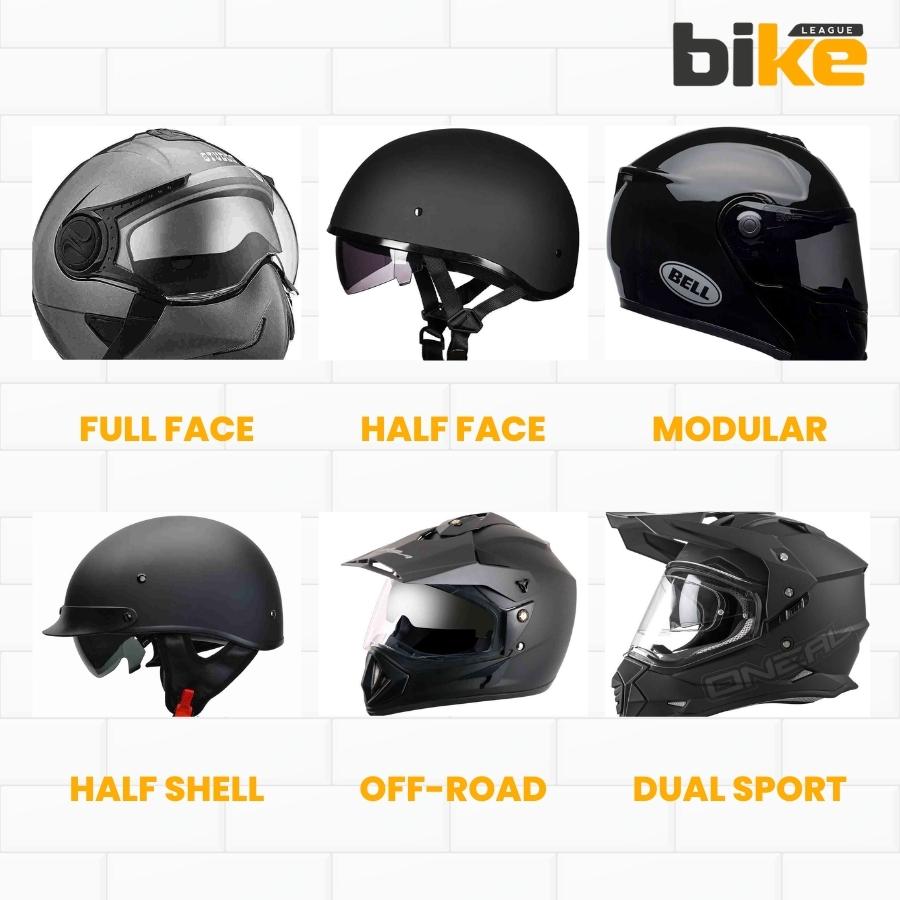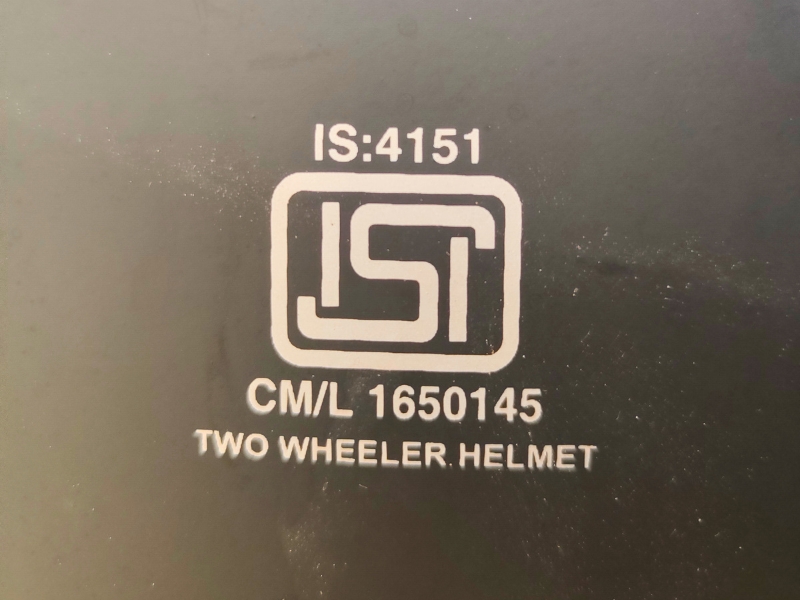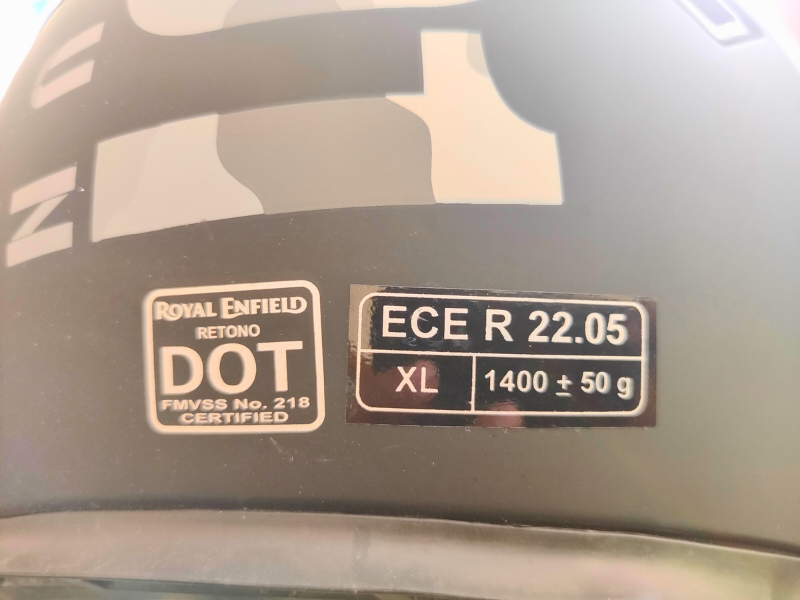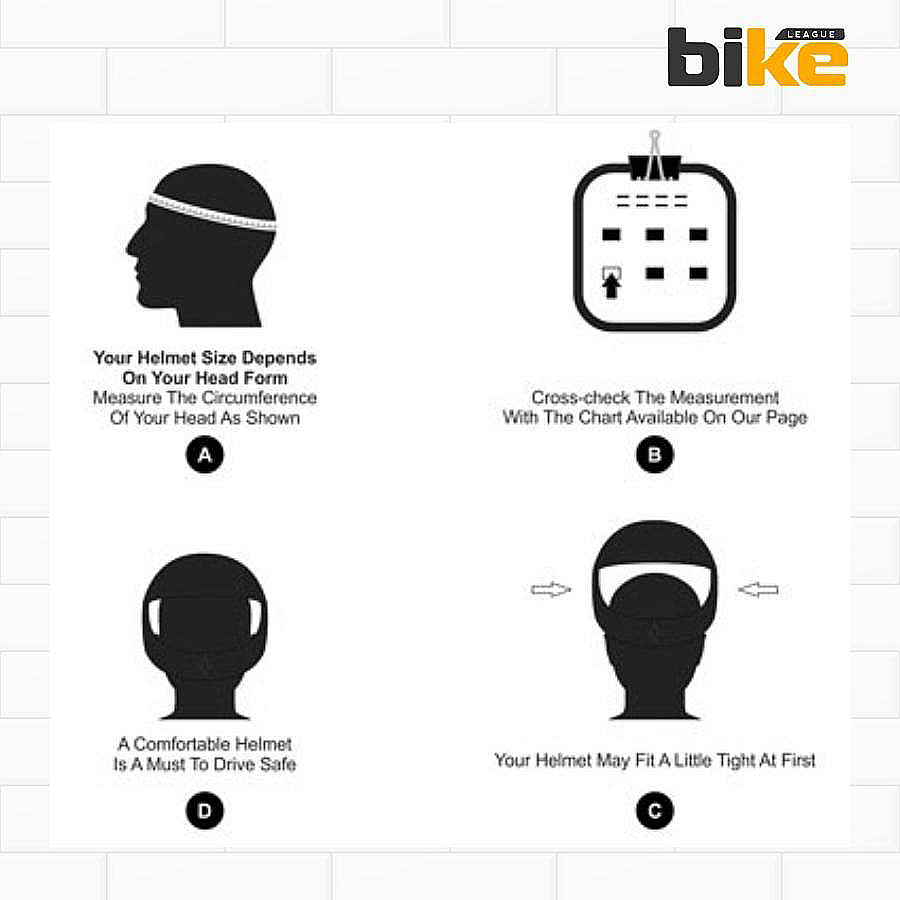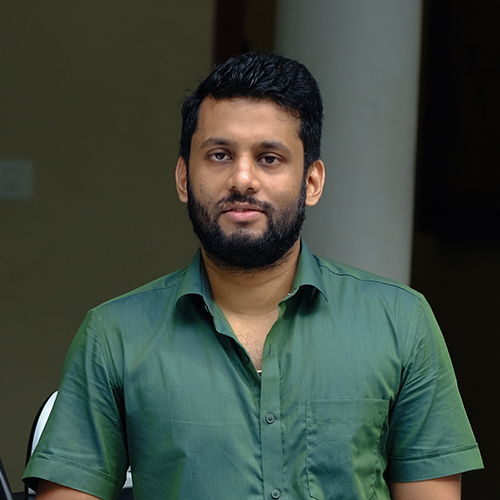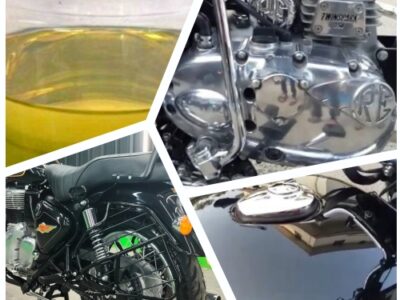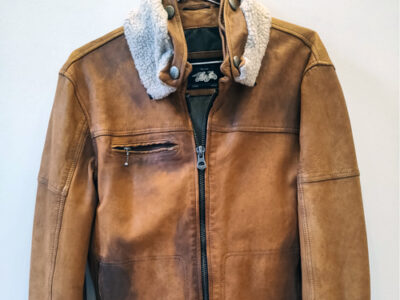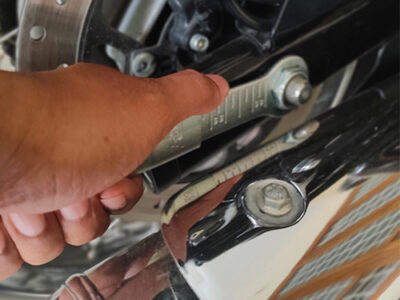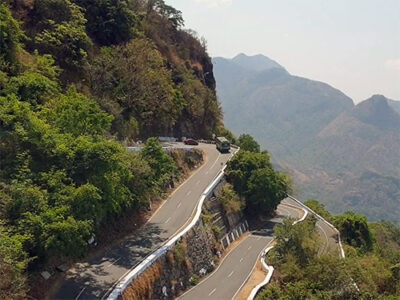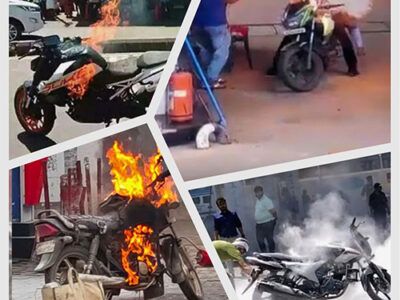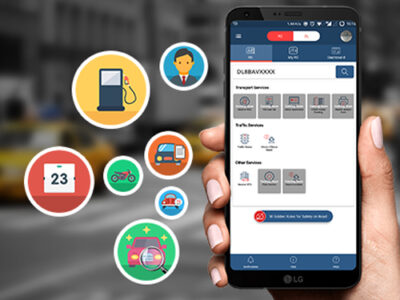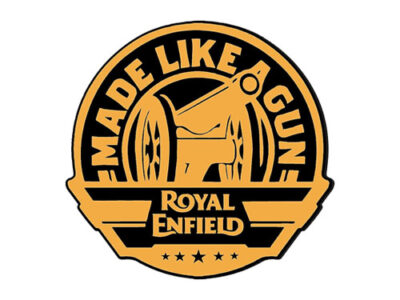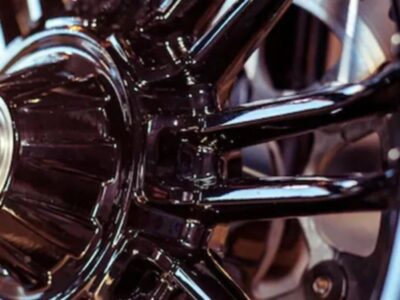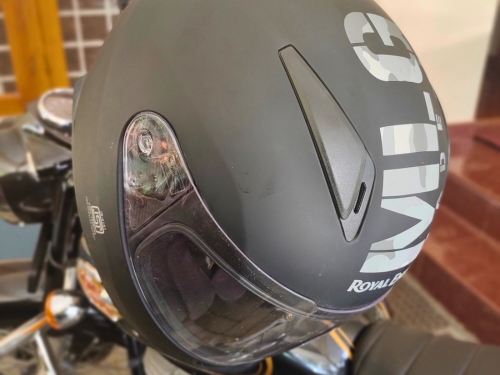
Long story short – We want to make your motorcycle helmet buying decision on the right track and the right product in this overloaded information era with different helmet types, rules, safety standards and much more in India.
Key Takeways
- A motorcycle helmet’s layered design ensures protection, with added vents and visors for comfort and safety.
- India allows six legal helmets: full-face, modular, open-face, half-shell, off-road, and dual-sport. While half-helmets and half-shell helmets are legal with ISI certification, they offer minimal protection.
- Helmet certifications like ISI, DOT, ECE, SNELL, and SHARP ensure safety through impact and retention tests, with ISI mandatory in India and SHARP offering a star-based rating.
- When buying a motorcycle helmet in India, prioritize safety certifications (ISI, DOT, ECE), proper fit, ventilation, weight, and visibility. Always purchase offline for the best fit, replace every five years, and avoid low-quality free helmets from dealers.
Motorcycle helmets are crucial for safety, as riding without one can lead to fatal accidents. In 2022, India reported 1,15,188 road accidents, with 4,12,439 fatalities—32,460 of which were motorcyclists, representing about 8% of all road deaths. With the abundance of information available today, choosing the right helmet can be overwhelming. It’s important to understand marketing tactics used by dealers to make an informed decision. At Bikeleague, we’re here to guide you in selecting the right helmet and ensuring you know essential safety tips before you buy.
How a motorcycle helmet works and what is the anatomy of a helmet
The helmet comprises several high-quality materials, each with a clear-cut purpose. They work together to protect the head from all sorts of worse situations. Let’s check the anatomy of a helmet and how it works.
1. Hard outer shell
Most helmets use polycarbonate or fibreglass, which is economical compared to Kevlar or carbon fibre. Premium helmets use the latter, which is the cost and protects the rider in the worst conditions.
2. Protective inner shell
Every helmet has an inner shell to protect the head against physical impact when it hits the road. This protective inner shell is expanded polystyrene (EPS). EPS absorbs the impact force and cushions the skull to protect the head.
3. Removable soft lining
The third layer is a removable soft liner that protects the face and neck against the EPS’s hard surface. The removable soft lining is washable and is usually made of hypoallergenic materials to prevent allergic reactions.
4. Protective padding
Protective padding protects the cheek and jawbones. It is made of soft sponge or shock-absorbing composite materials that keep you comfortable on long rides and protect the facial bones.
5. Strapping mechanism
A high-quality strap is mandatory to ensure it stays on your head even during an accident. The release mechanism should be easy; otherwise, it will be frustrating to use
6. Vents
ventilation systems allow good air flow within and outside the helmet to keep riders cool and comfortable on long rides. We cannot imagine long rides without good ventilation, especially in hot conditions.
7.Visors
The visor is a curved material worn above the eyes to protect them from the sun, dust, etc. They are designed to resist the normal wear and tear of an average daily ride for up and are replaceable.
Motorcycle helmet types legal and allowed in India
Six helmet types are legal in India, and they are as follows
1. Full Face Helmet
These helmets offer the most protection, covering the entire head, face, and jaw. They are ideal for highway riding and high-speed travel.
2. Modular Helmet / Flip up / Flip front helmet types
These helmets combine full-face helmet protection with an open-face helmet’s convenience. The chin bar can be flipped up, allowing easy face access and improved ventilation.
3. Half Face / Open Face Helmet types
These helmets provide less protection than full-face helmets but offer more airflow and visibility. They are suitable for low-speed riding and urban environments.
4. Half Shell Helmet
These helmets offer the least protection, covering only the top of the head. They are not legal in most states in India.
5. Off-Road Helmets
These helmets are designed for off-road riding and feature a peak to protect the rider’s face from the sun and mud. They also have a visor that can be removed to add airflow.
6. Dual Sport Helmets
These helmets are designed for both on-road and off-road riding. They combine features of both full-face and off-road helmets.
Many in India have the misconception that half-helmets and half-shell helmets are illegal, but they are legal. Do note that they provide minimal safety and must have ISI certification.
Motorcycle Helmet Safety standards in India
There are mainly 5 helmet standards in India that we can see on the helmets, and they are
1. ISI (Indian Standards Institute)
Indian Standards Institute (ISI) standard number and designation for motorcycle helmets in India is IS 4151. This standard is specifically designed for protective helmets for two-wheeler riders, including motorcycles and scooters. It’s important to note that IS 4151 was first issued as an emergency standard in 1967 and has undergone several revisions, the most recent being the fourth revision in 2015.
Main Points about ISI Helmet standards in India
- Impact Absorption: Ensures the helmet can absorb the energy of an impact to protect the rider’s head.
- Penetration Resistance: Tests the helmet’s ability to withstand penetration by sharp objects.
- Retention System: Evaluates the strength and durability of the chin strap.
Detailed Requirements and Criteria
The IS 4151 standard outlines several specific safety requirements that motorcycle helmets must meet to ensure adequate rider protection. These requirements include:
- Impact Absorption: Helmets must effectively absorb impact to protect the rider’s head during a collision. This involves rigorous testing of the helmet’s ability to withstand the effects on various parts of its structure.
- Penetration Resistance: The helmet shell must resist penetration by sharp objects. This is tested by applying a pointed object to the helmet to ensure it does not penetrate the shell.
- Retention System: The chin strap and its attachments must be strong enough to keep the helmet securely on the rider’s head during an accident. The strap’s strength and durability have been thoroughly tested.
- Field of Vision: Helmets must provide a minimum field of view to ensure the rider can see adequately while riding. This is a crucial safety aspect and forms part of the certification process.
- Labelling and Marking: All helmets must be appropriately labelled with the manufacturer’s details and the ISI mark to indicate compliance with the standard. If a visor is provided, it must also be appropriately marked.
- Material Specifications: The helmet shell can be made from either metallic or non-metallic materials, but it must conform to the test requirements specified in the standard.
- Weight Limitations: Recent updates to the standard have set a maximum weight limit for helmets to ensure comfort and usability. The maximum weight is now set at 1.2 kg, down from the previous limit of 1.5 kg.
2. DOT (Department of Transportation)
The Department of Transportation certification is a U.S. government standard that signifies helmets have undergone tests for impact absorption, penetration resistance, and retention strap strength. Unlike other certifications, manufacturers self-certify that their helmets meet DOT standards, with random testing conducted to ensure compliance. A DOT sticker signifies that the helmet meets necessary U.S. safety requirements.
Main Points about DOT
- Impact Absorption: Tests the helmet’s ability to absorb energy during an impact.
- Penetration Resistance: Ensures the helmet can resist penetration by sharp objects.
- Chin Strap Strength: Evaluates the durability and strength of the retention system.
- Peripheral Vision: Ensures the helmet provides adequate field of vision.
3. ECE (Economic Commission for Europe)
The ECE standard is recognized in over 50 countries and includes rigorous testing for impact absorption, strap integrity, and abrasion resistance. ECE-certified helmets undergo testing at independent labs before they can be sold, ensuring consistent safety for riders. The current ECE standard is ECE 22.06, which has been in force since January 2022.
Main Points about ECE Helmet standards in India
- Impact Absorption: Tests the helmet’s ability to absorb energy during an impact.
- Chin Strap Durability: Evaluates the strength and durability of the chin strap.
- Shell Strength: Ensures the helmets outer shell can withstand impacts.
- Visibility: Tests the helmet’s field of vision to ensure it provides adequate visibility.
4. SNELL (Snell Memorial Foundation)
SNELL standards are among the strictest, involving tests including impact, penetration, flame resistance, and the ability to withstand rolling. This certification is voluntary, with helmets undergoing independent testing by the Snell Foundation. A SNELL certification means the helmet offers superior protection, often exceeding the requirements of other helmet standards in India.
Main Points about SNELL
- Impact Resistance: Tests the helmets ability to withstand multiple impacts.
- Penetration Tests: Ensures the helmet can resist penetration by sharp objects.
- Chin Bar Strength: Evaluates the strength and durability of the chin bar.
- Retention System: Tests the durability and strength of the retention system.
5. SHARP (Safety Helmet Assessment and Rating Programme)
SHARP, from the UK, goes beyond standard certification tests by rating helmets from one to five stars based on their safety features and performance in impact tests. This rating system offers an easy way for riders to understand a helmet’s safety level, providing additional information on how a helmet might perform in real-world accidents.
Main Points about SHARP
- Star Rating System: Rates helmets from one to five stars based on their performance in impact tests.
- Field of Vision: Considers the helmets field of vision.
- Ventilation: Evaluates the helmets ventilation system.
- Ease of Use: Assesses how user-friendly the helmet is.
Features to Consider while buying motorcycle helmets
When purchasing motorcycle helmets in India, consider the following features:
- Safety Certifications: Look for ISI, DOT, or ECE approval to ensure the helmet meets rigorous safety standards.
- Fit: A helmet should fit snugly without pressure points. Try different sizes and shapes to find your perfect match.
- Weight: Lighter helmets reduce neck fatigue on long rides. However, don’t sacrifice protection for weight savings.
- Ventilation: Good airflow keeps you cool and comfortable, especially in India’s climate.
- Visor Quality: Look for scratch-resistant, anti-fog properties. A Pinlock system is a bonus for clear vision in all conditions.
- Noise Levels: Consider how much wind noise you’re willing to tolerate, especially for highway riding.
- Comfort Features: Removable, washable liners and moisture-wicking fabrics enhance long-term comfort.
- Style: While safety comes first, there’s nothing wrong with looking good on the road.
- Brand Reputation: Stick to established brands with a track record of quality and after-sales support.
- Budget: Determine how much you’re willing to spend, but remember – your head is worth the investment.
What are the latest motorcycle helmet rules in India?
- All riders and pillion riders above four must wear a helmet while riding a motorcycle in India. This rule is applicable in all states and union territories of India.
- Helmets must be made from high-impact absorbing materials like ABS (Acrylonitrile Butadiene Styrene) or polycarbonate to provide adequate protection against impact. The inner shell should be made from expanded polystyrene (EPS) or polypropylene (EPP) to effectively absorb and distribute the impact force.
- All helmets sold in India must be BIS certified, ensuring they meet the specified helmet safety standards under CMVR (Central Motor Vehicles Rules). This certification guarantees the helmet’s material, construction, and performance meet the required safety requirements.
- The helmet’s inner liner should have a minimum thickness of 20-25 mm (0.79-0.98 inches) and be made from high-quality foam to provide comfort and shock absorption.
- The maximum weight of a helmet should not exceed 1.2 kg (2.65 lbs) to minimize fatigue and neck strain during prolonged riding.
- The helmet’s visor must be made from a durable transparent material that offers clear visibility without distortion or obstructions. It should also protect against UV rays and scratches. Some visors may have anti-fog and quick-release mechanisms for added convenience.
- The helmet must have a secure and easy-to-use chinstrap system, such as a quick-release buckle or double D-ring fastener, to ensure proper fit and prevent the helmet from coming off during an accident.
- No cameras can be fixed on top of the helmet, resulting in several accidents.
Best Motorcycle helmet brands in India
Some of the best motorcycle helmet brands in India are listed below
- Vega
- Steelbird
- Studds
- Royal Enfield
- SMK
- LS2
- THH
- MT
- Sol
- Axor
- Aerostar
- HJC
- Shoei
- Gliders
- AGV
- Aaron
- Bell
- Arai
- Shark
If you are on a tight budget and need a decent amount of quality, then the best helmet brands are
- Vega
- Steelbird
- Studds
- THH
On the other hand, if budget is not an issue and quality is what you are purely looking for, then the best helmet brands are
- SMK
- LS2
- MT
- Shoei
- AGV
Best motorcycle helmets in India
The answer varies from person to person and depends on his needs, budget, purpose, etc. The market has many options, and this article is purely a guide. So, we will not specify the exact models in this article.
Motorcycle helmet fit and size measurement
- As per the image above, wrap a measuring tape around the head.
- The measuring tape must go above the eyebrows in the forehead and the ears in the back.
- Next, check the size chart and compare your measurements with the same.
- If two to three fingers can enter inside the head while wearing the helmet, it is loose and should look for smaller sizes.
- Initially, the helmet will be tight while wearing and loosen up a bit.
- There should be no movement of the helmet while shaking the head.
- We can consider Head shapes also, and there are three shapes: round oval, intermediate oval, and long oval.
- Long Oval – Head shape is longer from forehead to back of skull vs ear to ear.
- Intermediate Oval – The most common head shape. The front-to-back measurement is slightly longer than ear-to-ear.
- Round Oval – Both front-to-back/ear-to-ear measurements are nearly the same.
Where to buy helmets online?
Always look for helmet models on the official company website or in eCommerce portals like Amazon India or Flipkart. But never buy online.
Always buy bike helmets offline.
Yes, without a doubt. It would help if you always felt like wearing the helmet. Customers can decide on colour options and prices online but make the final decision only after wearing the helmet. So, always purchase offline, which is separate and dedicated.
Never opt for free helmets given by dealers while buying a motorcycle.
Nowadays, dealers must hand over helmets and motorcycles while buying as per the rule mentioned by the Government of India, which they say is free, but hidden charges exist. Quality-wise, they will be lower, and we will accept the same. Do not get trapped in such pitfalls, and always prioritize your safety.
Replace the helmet with a brand new one every five years
The helmet’s expiration date is around five years. The chin strap, outer shell, and inner padding show the ageing signs of a helmet. Check for the same before replacing the helmet. If a helmet is met with an accident, it should not be used further.
Certification, fit, visibility, air circulation, weight
Customers must consider certification, fit, visibility, air circulation, weight, and inner material washing options.
- A helmet should not be too tight or too loose.
- Maximum visibility is better for riding.
- Air circulation/ventilation should be proper inside.
- Weight should not be too much as it can result in neck pain.
- Internal materials like inner lining should be washable.
- Visors should be anti-UV and anti-scratch resistant and replaceable.
- Should have ISI, DOT, and ECE certifications. ECE is the most thoroughly tested, while ISI and BIS are mandatory helmet standards in India.
Myths about motorcycle helmets in india
Myth 1: Helmets are only necessary at high speeds or on long rides.
Fact: Accidents can happen anywhere, regardless of speed or distance. It is essential to wear a motorcycle helmet while riding, even for short distances or at low speeds.
Myth 2: Helmets are too expensive.
Fact: Motorcycle helmets come in various prices to suit different budgets. There are many affordable and high-quality helmets available in India that provide excellent protection without breaking the bank.
Myth 3: Helmets are bulky and uncomfortable to wear.
Truth: Helmets are manufactured using lightweight materials like polycarbonate and ABS, and comfortable liners ensure a comfortable fit.
Myth 4: Helmets restrict your field of vision.
Fact: Modern motorcycle helmets are intended to provide a wide field of vision, typically around 210 degrees, allowing riders to see everything they need while riding.
Myth 5: Helmets are not necessary for skilled riders.
Truth: Even the most experienced and skilled riders can be involved in accidents. Helmets are not about being a good or lousy rider; they are about protecting your head from serious injury in the event of an accident.
Myth 6: Helmets restrict airflow and make riding uncomfortable.
Fact: Modern helmets have advanced ventilation systems that allow adequate airflow, preventing overheating and discomfort during long rides. Many helmets have adjustable vents to customize airflow based on personal preferences and riding conditions.
Myth 7: Motorcycle helmets make you look like a dork.
Fact: Two-wheeler helmets come in various styles, types & designs to suit individual tastes. Many stylish and attractive helmets are available in India.
Myth 8: I’m a careful rider, so I don’t need a helmet.
Fact: Even the most careful riders can be injured in an accident. Wearing a helmet to protect yourself from serious injury is always best.
Myth 9: I don’t need to wear a helmet because I’m not going to crash.
Fact: No one plans to crash, but accidents can happen even to the most cautious riders. It is always best to wear a helmet to protect yourself from serious injury in the event of an accident.
Essential links for motorcycle helmet, standards & types in India
- Bureau of Indian Standards (BIS)
- Department of Transportation (DOT)
- Snell Memorial Foundation (SNELL)
- Safety Helmet Assessment and Rating Programme (SHARP)
- economic commission for europe (ECE)
Other related articles from Bikeleague India
- What all basic motorcycle accessories should a rider have
- Must have bike accessories for a long distance trip
- Things to know while buying second hand motorcycle
- Buying guide for motorcycle gloves in India
- The dos and don’ts of bike modification & traffic rules in India
Conclusion
If you have any other doubts or queries about motorcycle helmet types, rules, standards, etc., in India, email us at bikeleague2017@gmail.com or share your doubts or opinions in the comments section below. We are always eager to help and assist you. Also, here are several social media platforms of Bikeleague India to raise your suspicions.

